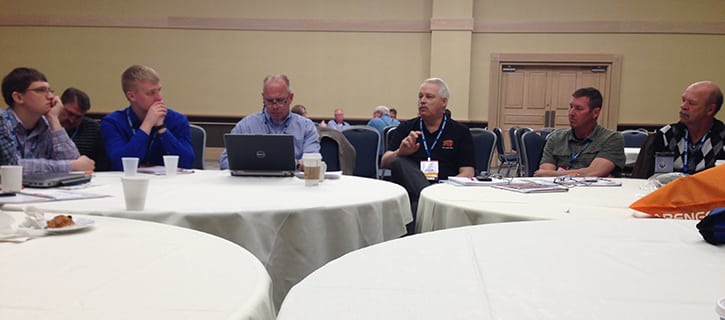Famous Last Words: “It’s Never Happened to Us!”
Don’t wait until after an incident to make improvements and correct problems in coal handling systems: That was the message delivered to attendees at the best practices workshop during the Powder River Basin Coal Users’ Group (PRBCUG) Annual Meeting, which began on April 20.
The event—being held in Rosemont, Ill., in conjunction with the 17th Annual ELECTRIC POWER Conference + Exhibition—includes three days of in-depth educational opportunities and targeted networking with hundreds of coal power professionals. It offers a chance to learn more about PRB coal, and get new ideas and proven best practices in the areas of safety, environmental compliance, maintenance, operations, and more.
During the tabletop sessions to open the event, three topics of interest were offered to attendees: boiler and combustion; coal handling; and safety, fire protection, and risk management.
In the coal handling session, engineers from the Laramie River Station—a 1,710-MW three-unit facility located east of Wheatland, Wyo.—spoke about an explosion that occurred at their plant in May 2013 and corrective actions that have been taken to prevent similar incidents in the future. The key takeaway from the discussion was that plants should evaluate dust control measures currently in place and take action to correct problems before, rather than after, an incident occurs.
Although the cost to remedy problems can seem large and is sometimes difficult to justify to management personnel who control the company’s purse strings, Mark Collett (Figure 1), director of power, mining, and minerals project development for River Consulting, suggested that engineers and other plant personnel have a responsibility to sell their solutions. He said it might be the only chance to get things done the right way.
 |
| 1. Mark Collett (fourth from the left in foreground) offers advice during coal handling best practices tabletop session at the PRBCUG Annual Meeting. Source: POWER |
The leadership at Laramie created a team in the aftermath of its explosion to evaluate and prioritize corrective actions. A criticality analysis using 10 criteria was used. It was expected to take three to four years to complete all of the projects identified, so the criticality analysis was intended to rank equipment and systems to get an objective assessment and create a schedule. In its analysis, bunkers and cascades were ranked number one.
In addition to the Laramie discussion, personnel from James H. Miller Jr. Electric Generating Plant, a 2,640-MW four-unit station, located along the Black Warrior River near West Jefferson, Ala., spoke about their efforts to eliminate as many of the 11 dry dust collectors as possible at their facility. Collett noted that there is a real hazard in dry dust collectors, because the majority of fires and explosions at coal-fired facilities occur in them.
Rather than trying to collect dust, efforts are being focused on reducing dust generation. Alabama Power intends to use chemical foam dust suppression in some areas to keep dust down. It doesn’t expect to eliminate all of its dry dust collectors, but by getting rid of some, it hopes to reduce risk at the plant.
Fires in PRB coal piles are a serious concern, but some participants suggested that treating coal at the mine with an anti-oxidant additive offers a solution. Bill Konefes, power plant superintendent for Georgia-Pacific Corp., said that his plant used to get smoldering in coal stored for only two and a half weeks, but since it has been applying the additive, he believes that time has been extended four-fold.
Jim Wiseman, president of Wiseman Consulting and a member of the PRBCUG board, said that good pile management practices make a big difference in reducing the risk of fire and smoldering incidents. Wiseman mentioned a 300,000-ton PRB coal pile that was maintained at Kinder Morgan’s Pinney Dock Terminal on the shores of Lake Erie for three years without a fire. He said the pile was built using a bulldozer with tracks rather than rubber tires and that the sealant lasted a year and a half. There was some erosion that required resealing, but the pile was successfully managed.
A lot of important discussions were held in the other groups as well. Bob Taylor, president of CoalSafety Inc. and secretary of the PRBCUG, suggested that the PRBCUG’s desire is to help plants solve problems and develop best practices.
“We don’t want to be stagnant,” Taylor said. “We want to get better to serve you as an organization.”
—Aaron Larson, associate editor (@AaronL_Power, @POWERmagazine)